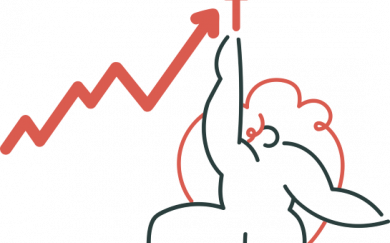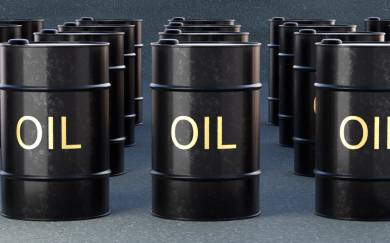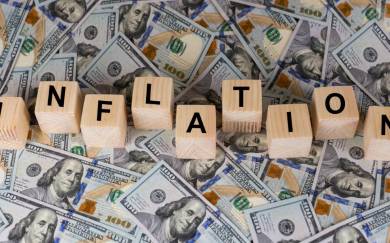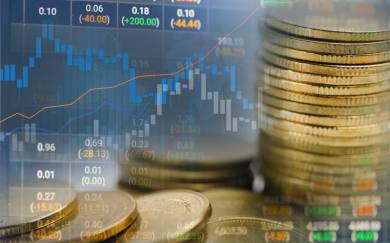Iron Ore Shipments Could Continue To Fall And Hurt Earnings And Shares

Saxo Bank 28.11.2022 09:06
Summary: Dramatic scenes of widespread protests in China against Covid policies there have pulled sentiment lower, with US yields dipping to new local lows and crude oil prices pushing on cycle lows even after Friday’s drop. The USD has firmed against most currencies, but the Japanese yen is stronger still as the fall in yields and energy prices support the currency. This is a sudden powerful new distraction for markets when this week was supposed to be about incoming US data.
What is our trading focus?
Nasdaq 100 (USNAS100.I) and S&P 500 (US500.I)
S&P 500 futures failed to touch the 200-day moving average in Friday’s trading retreating slightly into the weekend. This morning the index futures are continuing lower bouncing around just above the 4,000 level. The US 10-year yield declining to 3.65% with the 3.5% level being the likely downside level the market is eyeing is naturally offering some tailwind for equities in the short-term. However, the key dynamic to get right now in the medium term is the potential earnings recession caused by margin compression as the economy slows down and wage pressures remain high.
Hong Kong’s Hang Seng (HISX2) and China’s CSI300 (03188:xhkg)
Mainland China and Hong Kong stock markets retreated as investors were wary about the surge in daily new Covid cases across China and the outburst of anti-strict-control protests in several mega cities, including Beijing and Shanghai. The cut in reserve requirement ratio by the central bank on Friday evening did not give the market much of a boost. Hang Seng Index and CSI 300 plunged more than 2% each. The China internet space fell 2%-5%. Macao casino stocks bucked the trend and rallied following the Macao SAR Government’s announcement to renew casino licenses with all incumbent operators. Wynn Macau (01128:xhkg) jumped nearly 16%. The three leading Chinese catering chains listed in Hong Kong gained 4% to 6%.
USD and JPY firm overnight as Chinese Covid protests drag on risk sentiment
The US dollar was higher overnight against most currencies even as US treasury yields hit new cycle lows as widespread protests in China against the Covid policies there are weighing heavily on risk sentiment. Hardest hit among G10 currencies has been the Aussie, with AUDUSD trading back below 0.6700 after pulling above 0.6780 at one point on Friday. USDCNH jumped above the important 7.200 level. The hit to yields and perhaps lower crude oil prices are driving a strong revival in the Japanese yen, which traded higher even against the US dollar overnight, taking USDJPY back toward the recent lows overnight. This is a sudden new distraction for FX traders, when this week was supposed to be all about the incoming US economic data, including the October PCE inflation data up on Thursday and the November jobs data on Friday.
Crude oil plunges as China unrest rattles markets
A weak sentiment spread across commodities as markets opened in Asia with crude oil, copper and iron ore all trading sharply lower following a weekend that saw waves of unrest in China, the world's biggest consumer of raw materials. Protest and boiled up frustration against President Xi’s increasingly unpopular anti-virus curbs erupted over the weekend, raising the threat of a government crackdown. While the short-term demand outlook may take a hit and add further downside pressure to prices, the eventual reopening is likely to be supported by massive amounts of stimulus. The market is also watching ongoing EU price cap discussions, next week’s OPEC+ meeting and rollout of an embargo on seaborne Russian crude and Chevron receiving a license to resume oil production in Venezuela.
Gold (XAUUSD)
Gold trades unchanged with safe haven bids in bonds and the dollar offsetting each other, while silver (XAGUSD), due to its industrial metal link, trades down more than 2% following a weekend of covid restriction protests across China. After finding support in the $1735 area last week, a break above $1765 may signal a return to key resistance at $1788, but lack of ETF buying still makes it hard to confirm a major change in direction. Aside from China, the market will be watching incoming US data for any signs of a slowdown in the pace of future rate hikes (see below)
US treasuries find safe haven appeal, driving new local lows in yields. (TLT:xnas, IEF:xnas, SHY:xnas)
The risk-off mood overnight is driving strong safe haven flows into US treasuries, as the 10-year benchmark traded to new local lows below 3.65%, with little room left to the pivotal 3.50% level. The 2-10 yield slope hit a new cycle extreme of –80 basis points overnight, a deepening indication of an oncoming recession. The 3-month treasury bills vs 10-year treasury notes spread went to minus-64bps, a level usually seen within 12 months preceding the onset of a recession. For a detailed discussion of our take on the outlook of bonds, please refer to this note we published last Friday. This week, interesting to see how the market balances the implications of what is unfolding in China versus incoming data in the US, especially the November jobs report on Friday.
What is going on?
Protests against Covid lockdowns in several Chinese cities
Anger over suspected delays to rescue from a deadly fire burst into anti-lockdown protests in Xinjiang. After a fire at a locked-down apartment killed 10 people, hundreds of angry residents in Urumqi, Xinjiang took to the street to protest against the Covid lockdown imposed more than three months ago. Meanwhile, daily new cases shot up to a record high of 40,052, with Beijing, Guangzhou, Chongqing, and Shanghai significantly tightening movement restrictions. Video footage and photos on social media showed that protests against Covid restrictions sprang up in several other cities over the weekend, including Wuhan, Nanjing, Beijing, and Shanghai.
China’s PBOC cut the reserve requirement ratio (RRR) by 25bps
The People’s Bank of China (PBOC) announced a reduction of 25bps for all banks except for some small which had already had their RRR cut to 5% earlier. The weighted average of RRR across all banks falls to 7.8% from 8.1% after the latest move. The PBOC projects that the reduction in RRR will make available to banks an additional RMB400 billion. The 25bps cut this time, the same as the cut in April this year, was small by historical standards when 50bp or 100bp cuts seemed to be the norm. It helps improve banks’ funding costs, but it may do little to boost the economy as the demand for loans is subdued.
The U.S. bans telecommunications equipment from China’s Huawei, ZTE and more
The U.S. Federal Communications Commission said on Friday that the U.S. had decided to ban the import and sale of telecommunication equipment from China’s Huawei Technologies, ZTE, Hytera Communications, and surveillance equipment makers Dahua Technology and Hangzhou Hikvision Digital Technology. The U.S. regulator said these Chinese telecommunication equipment makers pose “an unacceptable risk” to U.S. communication networks and national security.
RBA’s Lowe still sees a strong demand; but retail sales turned negative
The Reserve Bank of Australia Governor Lowe appeared before the Australian parliament's Senate Economics Legislation Committee and said that demand is still too strong relative to supply. He said he is unsure about labor market, and wage growth is consistent with inflation returning to target. He was worried about housing supply and expects to see rental pressure over the next year. Australia’s October retail sales, however, dipped into negative territory for the first time this year, coming in at -0.2% MoM vs. expectations of +0.5%.
Chevron gets US license to pump in Venezuela
Chevron had been banned from pumping due to US sanctions against the government of Venezuelan President Nicolás Maduro. But WSJ reported that on Saturday, the US said it will allow Chevron to resume pumping oil from its Venezuelan oil fields. The shift may open the door to other oil companies that had operated previously in Venezuela, despite the near-term headwinds and the massive investments that may be needed.
Bullard and Powell speak – pushback against easing financial conditions?
While the economic data continues to slow, and markets continue to cheer on that, it will key for Fed members to bring the focus back to easing of financial conditions and consider what that means for inflation. Chicago Fed national financial conditions index eased further in the week of November 18, bringing financial conditions to their easiest levels since May. Most of the Fed members that have spoken since that soft CPI release for October have pushed back against pivot expectations, but it hasn’t been enough. Further pushback is still needed if the Fed is serious about bringing inflation under control, and only the most hawkish members of the committee Bullard and Powell may be able to deliver that. Both will be on the wires this week. Bullard speaks on Monday while Powell discusses the economic outlook and labor market on Wednesday. Other Fed members like Williams, Bowman, Cook, Logan and Evans will also be on the wires.
Commodity companies exposed to China are vulnerable for further pull backs
This week focus is on companies exposed to China, given forward earnings are likely to be downgraded following further China lockdowns and protests. Be cautious that investors could be looking to take profits or write options for downside protection in commodity exposed equites. Also note, on Friday fresh data showed that the major iron ore companies, BHP, Rio, Fortescue, are likely to be shipping almost 6% less than last year, in the final quarter of this year, and if lockdowns worsen, iron ore shipments could continue to fall and hurt iron ore majors' forward earnings and shares. On Monday in Asia, the iron ore (SCOA) fell 1.6% dragging down shares of ASX listed BHP, and Rio Tinto, who both lost about 1%+.
What are we watching next?
Weighing the sudden new intrusion of the Chinese protests story versus incoming US data
The recent narrative has been that markets have room to celebrate the downward shift in Fed tightening expectations and hopes that an eventual opening up of China’s economy will help boost global growth. The widespread protests at the weekend have changed the plot, driving new uncertainty on how things will develop and possibly outweighing a considerable portion of the implications of the next important data macro data points out of the US, especially the Friday November jobs report. As well, we’ll have a look at the ISM Manufacturing survey for the month on Thursday. The situation in China aside (which it won’t be), the question for the run-up into the December 14 FOMC meeting and in the month or so beyond is how long the market can continue to celebrate the Fed easing off the accelerator, when the reason it is doing so is that economic slowing and an eventual recession threaten. Normally, a recession is associated with poor market performance as profits fall and credit risks mount.
Apple production risk is on the rise.
The protests in China and the unrest around Apple’s largest manufacturing hub for its iPhone could lead to a production shortfall of close to 6mn iPhone Pro which was a Morgan Stanley estimate and was published before the intensified issues at the Apple manufacturing site.
Earnings to watch
98% of the S&P 500 companies have reported Q3 earnings reducing the earnings release impact from US equities. But European and Chinese companies are still reporting although the volume of earnings releases is also getting lower. Key earnings release to watch today is Pinduoduo which is expected to grow revenue by 44% y/y with EBITDA margin expanding to 21.2% as their online marketing revenue and uptake remain strong despite the slowing Chinese economy.
Monday: Pinduoduo, Capitaland, H World Group
Tuesday: Li Auto, DiDi Global, Bank of Nova Scotia, Intuit, Workday, Crowdstrike, HP Enterprise, NetApp, Shaw Communication
Wednesday: Royal Bank of Canada, National Bank of Canada, Salesforce, Synopsys, Snowflake, Splunk, Hormel Foods, KE Holdings
Thursday: Canadian Imperial Bank of Commerce, Bank of Montreal, Toronto-Dominion Bank, Marvell Technology, Veeva Systems, Ulta Beauty, Zscaler, Dollar General, Kroger
Economic calendar highlights for today (times GMT)
1400 – ECB President Lagarde to speak
1530 – US Nov. Dallas Fed Manufacturing
1700 – US Fed’s Williams (voter) to speak
1700 – Us Fed’s Bullard (voter 2022) to speak
2330 – Japan Oct. Jobless Rate/Retail Sales
Follow SaxoStrats on the daily Saxo Markets Call on your favorite podcast app:
Apple
Spotify
PodBean
Sticher
Source: https://www.home.saxo/content/articles/macro/market-quick-take-nov-28-2022-28112022

 InstaForex Analysis 29.09.2022 08:37
InstaForex Analysis 29.09.2022 08:37


 Saxo Bank 29.09.2022 13:58
Saxo Bank 29.09.2022 13:58






 Kamila Szypuła 19.10.2022 11:35
Kamila Szypuła 19.10.2022 11:35












 Conotoxia Comments 30.11.2022 15:16
Conotoxia Comments 30.11.2022 15:16
















